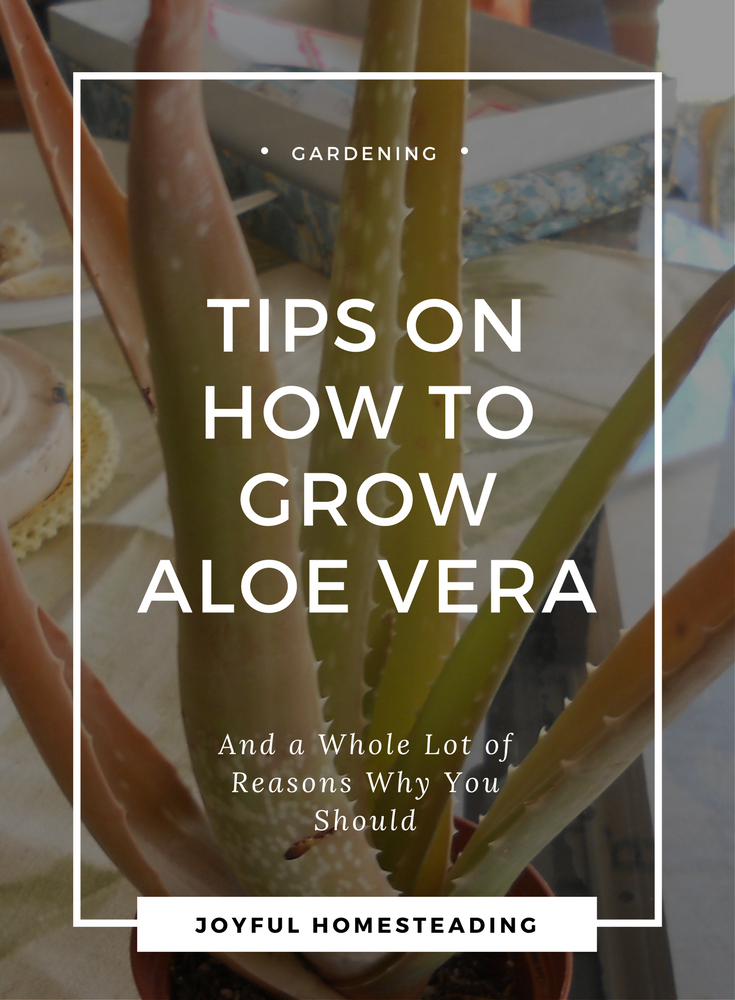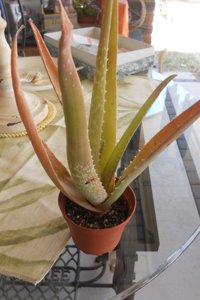How to Grow
Aloe Vera
Learn how to grow aloe vera, and you will have a natural first-aid remedy at your fingertips as well as an excellent antioxidant that fights cancer and inflammation. Here are the crucial points you need to know to grow aloe vera.

So why have an aloe vera plant or two around your homestead? There are a lot of uses and benefits to keeping this succulent around.
Aloe Vera Uses and Benefits
|
Aloe vera is famous for treating burns, making it a must-have for every kitchen. It's also excellent for treating rashes and scrapes. Make a cut on an aloe vera plant, and it will heal itself within hours. |
 |
That's because the gel in aloe vera is loaded with antibacterial, antiviral and antifungal properties.
Do you have stomach problems?
The gel in aloe vera will soothe your digestive tract and help with a number of digestive ailments, including constipation, heartburn, irritable bowel syndrome and Crohn's disease.
Aloe Vera is Loaded With Vitamins
The gel will also lower high cholesterol and oxygenate your blood. Aloe vera has high levels of vitamin C, E, B1, B2, B6 and folic acid. But one warning: Don't eat too much of aloe vera at one time as it could be hard on your kidneys. One leaf a day will do.
How to Grow Aloe Vera
Aloe vera is a succulent, meaning it stores a lot of water and thrives in hot, dry climates. It handles direct sun very well and hates the cold. It starts to go into shock in temperatures of 50 degrees Fahrenheit or lower.
If you live in a warm climate, such as Arizona, Texas or California, aloe vera will grow in your back yard, but if you live elsewhere, you will have to keep it in pots so that you can bring the plant indoors in the wintertime. Aloe vera goes into shock if exposed to temperatures of 50 degrees Fahrenheit (10 degrees Celsius) or lower.
How to Grow Aloe Vera:
Potting Aloe Vera
Place your aloe vera plant in a pot with holes that will allow drainage. Like all succulents, aloe vera prefers growing in a medium of sand and perlite. You can find a cactus growing mix here or at your local gardening center.
An aloe vera plant can and should grow to a fairly large size. The plants can grow to be a foot and a half tall, so you want to plant them in a fairly large pot, but not so big that you injure your back trying to move the thing.
How to Grow Aloe Vera:
Aloe Vera Plant Care
Because it is a succulent used to an arid environment, you don't need to water aloe vera as much as you would other plants. If its leaves are firm, then it's good and doesn't need water. Typically it won't need to be watered except once every two weeks if it is indoors. In the spring and summertime, when it is outside, you will need to water it twice a week.
When bringing your aloe vera inside, make sure it gets at least six to eight hours of light per day.
When it produces a baby at the side of the plant, gently pull it off and allow the baby to callous over until it looks dry. Set it on soil in a new pot. Spray your baby aloe with water every three to four days.
Aloe Vera Plant Use
The part of aloe vera you want to use is the gel. The dark red liquid that drips out is resin or latex, which could cause diarrhea. Cut a leaf off the plant and hold the leaf upside down for several seconds to allow the resin to drain.
Then split the leaf lengthwise. Slice away the gel from the skin of the plant, taking care to remove all pieces of leaf. Mike Adams of Natural Health News has created a photo tour of how to harvest the gel here.
Related article: Four Must-Have Healing Herbs You Should Be Growing










New! Comments
Have your say about what you just read! Leave me a comment in the box below.